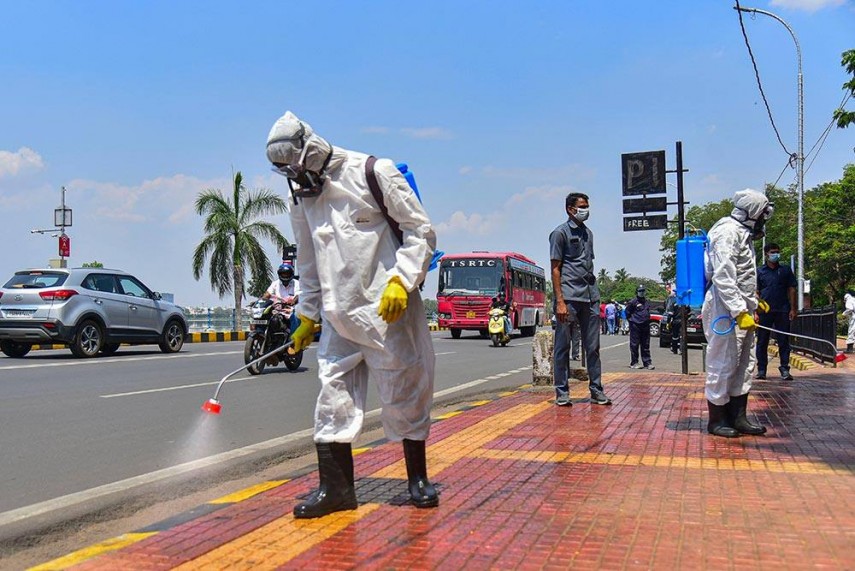The COVID-19 scenario in India is turning from bad to worse, and the lockdown – as also the virtual paralysis of the nation for over two months – has not been of much help in checking the spread of the virus. When the lockdown was imposed on March 25, the number of confirmed infections in India was 657. Today, it is more than 2.5 lakh, and over 7,000 people have died of the pandemic. A fear expressed by the Delhi government on Tuesday was that the infection figure in the capital itself could reach up to 5.5 lakh by July. What could be the scene at the national level will, thus, be anybody’s guess. India will emerge as the nation with the most bulging COVID cases, edging out China, the US and Europe in one swift go. India’s huge population could ensure a massive spread.
The national capital is set to beat Mumbai, the western metropolis that was seen in recent weeks as the worst case scenario. Mumbai has already exceeded the COVID tally of China, a reported 85,000 infections. Daily infection rate across India crossed the 10,000 mark – though this is mainly and mostly concentrated in specific cities.
Official word coming from Delhi is that there is no community transmission yet; but the reality on the ground is also that the source of infection in some 50 per cent of cases remains untraced. Hospitals are busting at the seams in the capital; there are not enough beds to treat the large flow of patients. The strain the health sector faces in the capital is evident from the CM’s attempt to limit treatment in government hospitals to only local residents; something that has been shot down by the Lt Governor. Even the personnel engaged in the COVID fight are falling prey, in substantial numbers, whether they be health workers, police personnel, or personnel of the National Disaster Response team – whose 49 members tested COVID positive in Odisha. It may be noted that the NDRF team members tested positive after their return from Amphan relief duties in West Bengal.
From June 8, much of the restrictions on people’s movements under the lockdown period of two months have been relaxed; meaning a whole lot of people are going to be in public places and in public transport, together. This will be against the social distancing norms that India has practiced with great resolve for several weeks to ward off the virus spread. However, this sudden relaxation will make Indians burst forth into public spaces without concern for their own or others’ safety. This, again, might result in a greater risk for a larger number.
A lot of things are unknown about this pandemic till date. The scientific community is still trying to understand its nature and a vaccine is easier said than done. Basic surmises might not necessarily be based on facts. For example, the World Health Organisation (WHO) has recently claimed that asymptomatic COVID-infected persons are very rare agents for spread of the virus. This assumption, which may make people happy, has immediately been challenged by the research and scientific community who have questioned WHO’s conclusive statement. The counter opinion claims that most diseases spread at the incubation period before the onset of symptoms. COVID is still a very new and un-researched virus that will require a long period of time before any solid evidence backed theories can be given.
COVID-19 has posed a crisis not only for India but for the entire world. This pandemic has gone beyond the boundaries of a global health emergency and has created an economic emergency. According to the World Bank, the global economy is set to face its deepest recession since World War II, which will shrink the world economy by 5.2 percent, that could trigger a dramatic rise in extreme poverty. The crisis for India might be deeper since the economy was already in doldrums because of the sudden Demonetisation move by the Modi government followed by a hurriedly implemented GST regime. With liquidity under severe stress, not only are individuals negatively affected but the government also is impacted due to lower collection of taxes. These chain events could make India vulnerable to hazards unseen by this nation till now.
